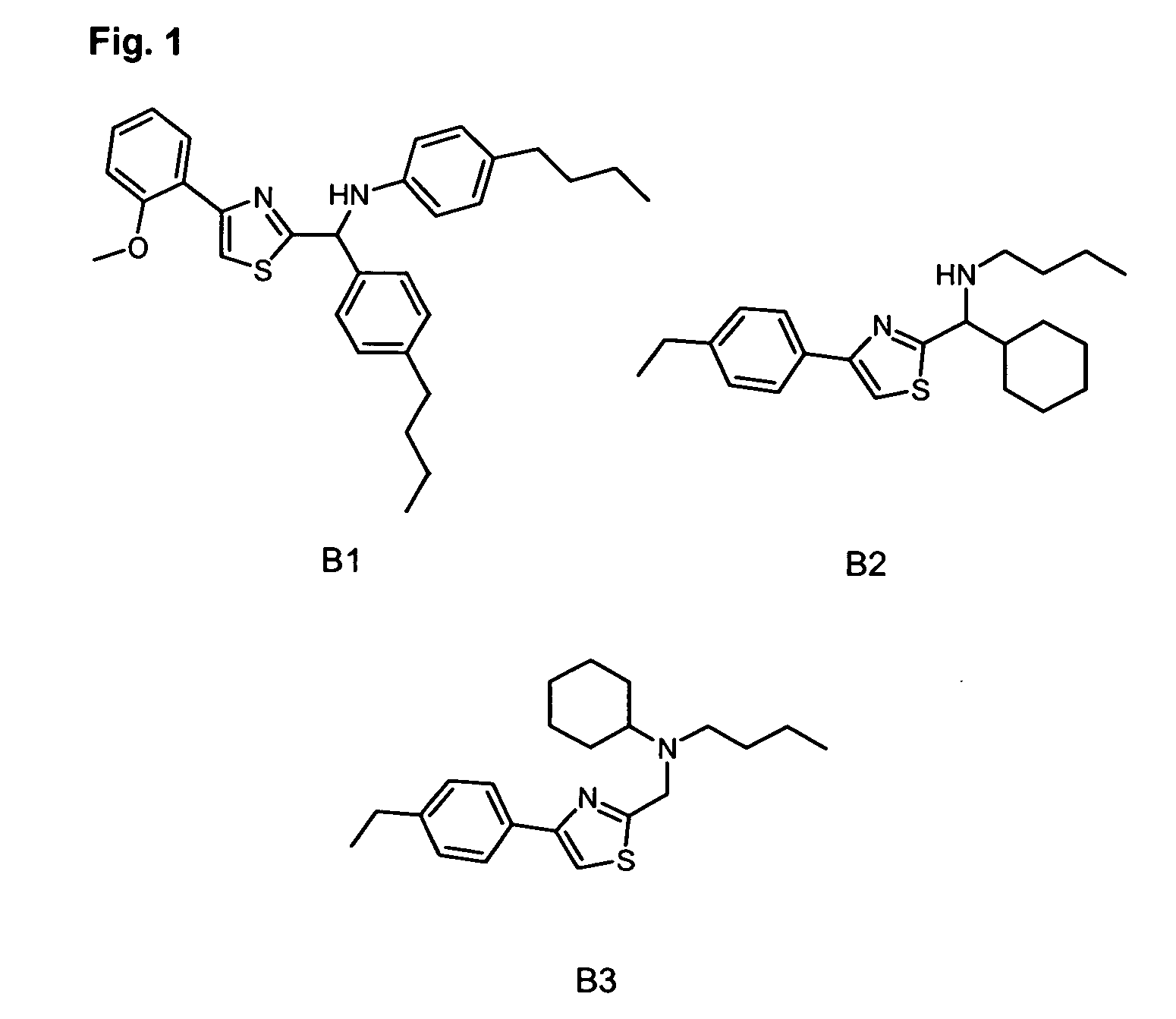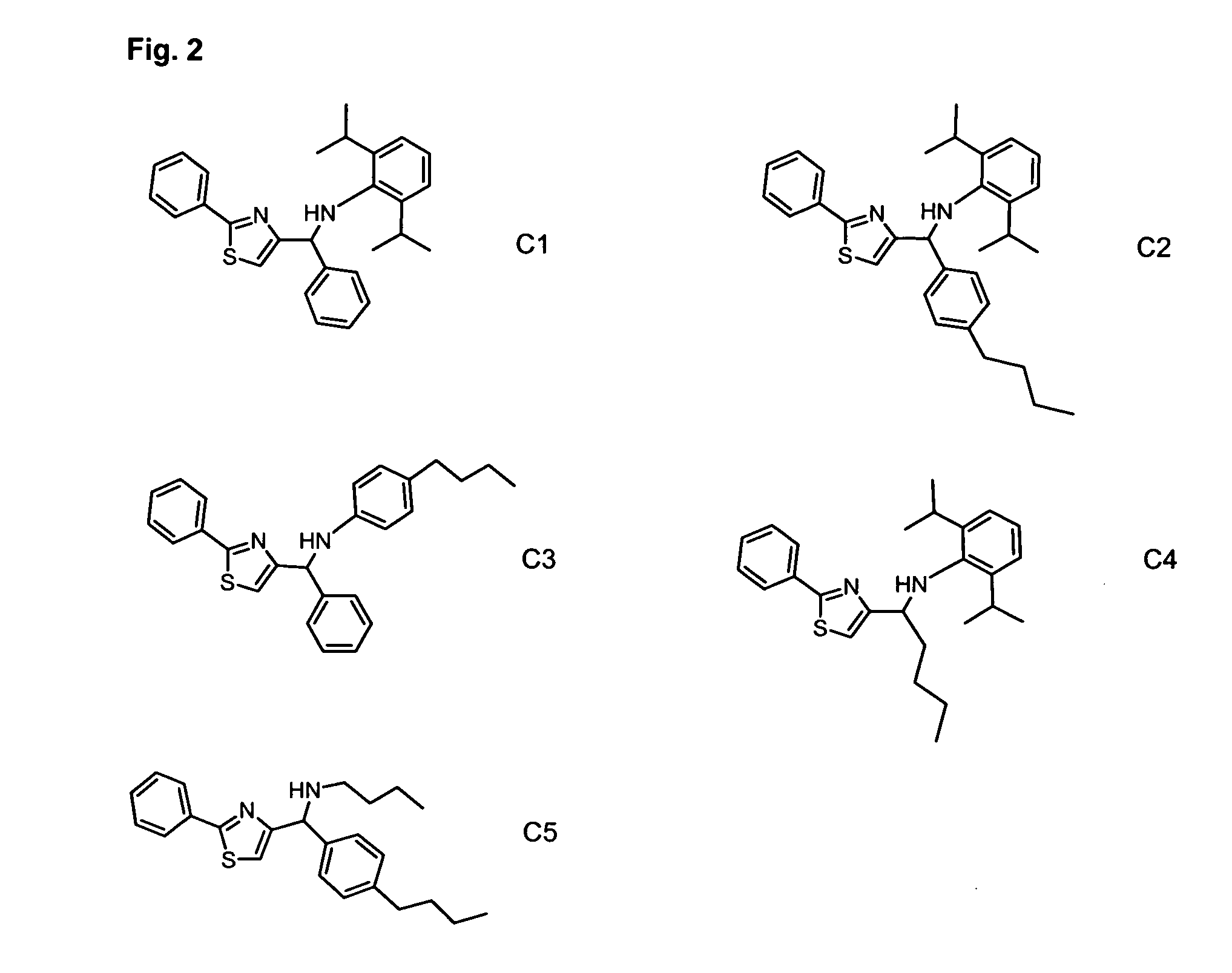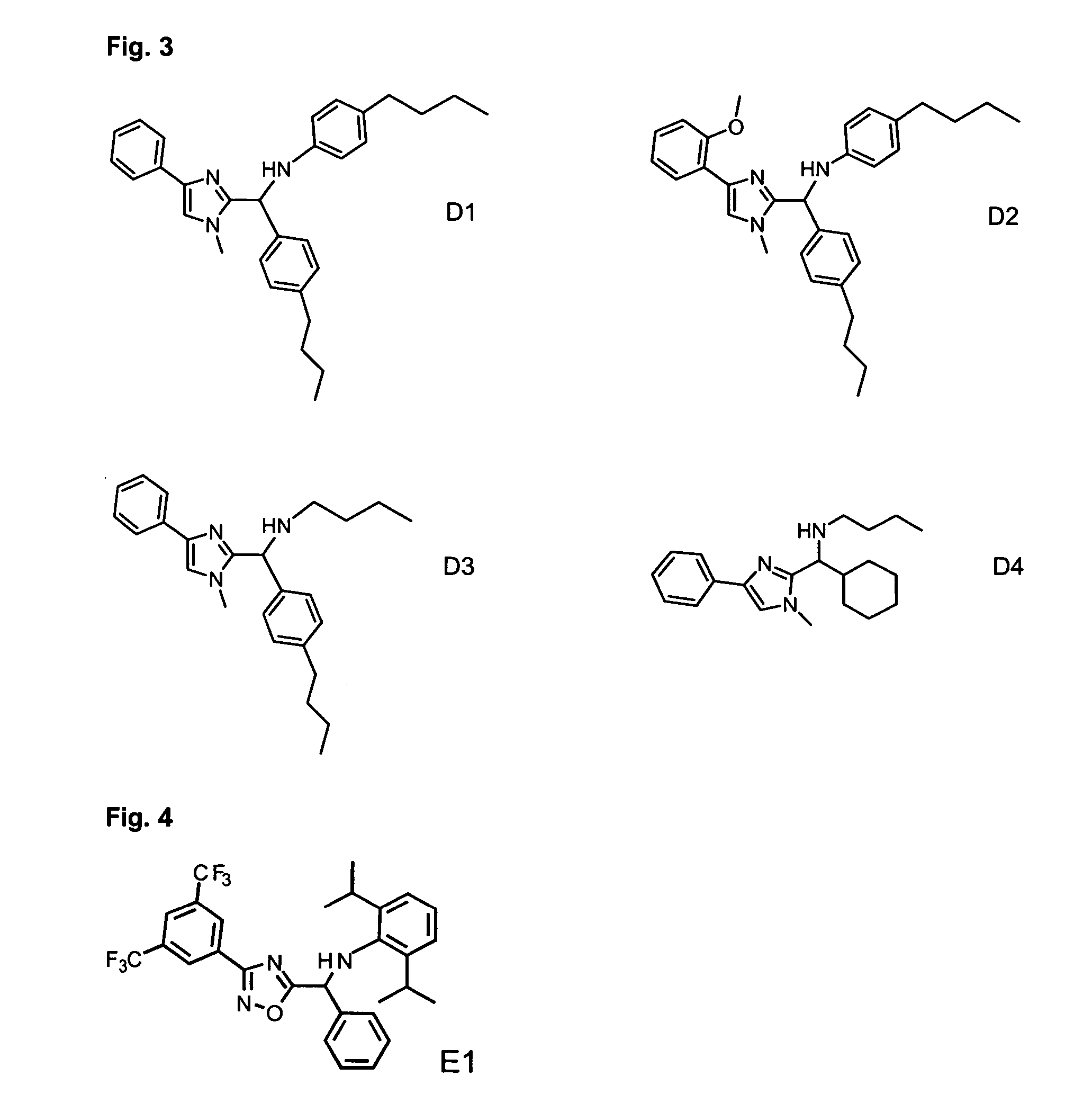Methods for oligomerizing olefins
- Summary
- Abstract
- Description
- Claims
- Application Information
AI Technical Summary
Benefits of technology
Problems solved by technology
Method used
Image
Examples
examples
[0237] General: All air sensitive procedures were performed under a purified argon or nitrogen atmosphere in a Vacuum Atmospheres or MBraun glove box. All solvents used were anhydrous, de-oxygenated and purified according to known techniques (see for example, D. D. Perrin & W. L. F. Armarego Purification of Laboratory Chemicals, 3rd Ed., (Pergamon Press: New York, 1988)). All ligands and metal precursors were prepared according to procedures known to those of skill in the art, e.g., under inert atmosphere conditions, etc. Ethylene oligomerization experiments were carried out in a parallel pressure reactor, described in U.S. Pat. Nos. 6,306,658, 6,455,316 and 6,489,168, and in U.S. application Ser. No. 09 / 177,170, filed Oct. 22, 1998, WO 00 / 09255, and a parallel batch reactor with in situ injection capability, as described in WO 04 / 060550, and U.S. Application No. 2004 / 0121448, each of which is incorporated herein by reference.
[0238] Quantitative analysis of the liquid olefin produc...
example 2
Thiazol-2-yl)-alkyl Amine Ligand Synthesis
example 2a
[0240] Step 1
[0241] The thiazole-amine aldehyde BB(3) (110 mg, 0.50 mmol), 4-butylaniline (83 μL, 0.53 mmol), and TsOH (catalytic amount, ca. 5 mol %) were combined in THF (4 mL) over 3Å molecular sieves. The reaction was heated at 65° C. for 3 h. The molecular sieves were removed by filtration and the reaction solution was concentrated by rotary evaporation then dried under vacuum to give 175 mg of imine BB(4) as an orange semi-solid. The BB(4) imine was used without further purification.
Step2
[0242] 4-n-Butylphenylmagnesium bromide (2.0 mL, 0.5 M in THF) was concentrated under a stream of N2 to remove THF. The Grignard reagent was taken up in Et2O (2 mL) and added dropwise to a solution of the imine BB(4) (175 mg, 0.50 mmol) in Et2O (4 mL) at −20° C. under N2. Additional Et2O (2 mL) was used to transfer the Grignard reagent, and the reaction was stirred at room temperature overnight. The reaction was quenched with sat. NH4Cl (aq.) and the layers were separated. The organic la...
PUM
| Property | Measurement | Unit |
|---|---|---|
| pressures | aaaaa | aaaaa |
| pressures | aaaaa | aaaaa |
| length×0 | aaaaa | aaaaa |
Abstract
Description
Claims
Application Information
 Login to View More
Login to View More - R&D
- Intellectual Property
- Life Sciences
- Materials
- Tech Scout
- Unparalleled Data Quality
- Higher Quality Content
- 60% Fewer Hallucinations
Browse by: Latest US Patents, China's latest patents, Technical Efficacy Thesaurus, Application Domain, Technology Topic, Popular Technical Reports.
© 2025 PatSnap. All rights reserved.Legal|Privacy policy|Modern Slavery Act Transparency Statement|Sitemap|About US| Contact US: help@patsnap.com



